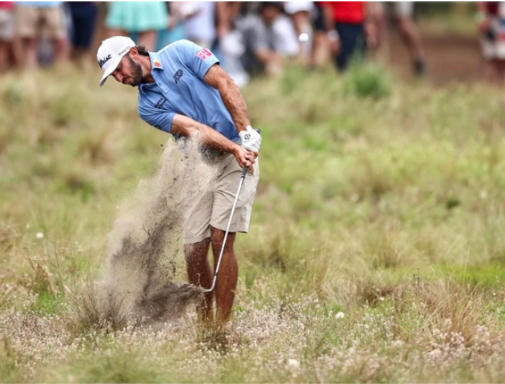There are no excuses for the USGA this time: Pinehurst No. 2 is primed and ready.
Forget the videos of golf balls trickling off the green and rolling 30 yards into a bush. Just hit a perfect approach shot. Don’t be concerned if you hear players complain later in the week that putts from off the green are too bumpy as they journey up to the putting surface. Just choose a different shot.
This is the U.S. Open. It’s not supposed to be easy; it’s barely supposed to be fair.
“This place is nuts,” said Canadian Taylor Pendrith after his first nine-hole practice round. “There’s going to be times where you look like a fool,” Nick Taylor commented on the practice green. “I don’t think you can avoid it. Hopefully it’s less than more.”
Pinehurst No. 2 is ready to test every part of the world’s best players, as a U.S. Open should. My message to the USGA for their 1,000th championship is simple: Don’t mess it up.
This isn’t a course that needs the heavy-handed approach of past U.S. Opens, where roughs were grown to swallow balls, fairways were narrowed, and greens were pushed to the brink for increased speed. It also doesn’t need to be softened to ease the pain it’s about to inflict on golfers. The current USGA, which has taken a kinder, gentler approach, should not round off the tournament’s harsher edges too much.
Pinehurst No. 2 is not an experimental U.S. Open course like Erin Hills or Chambers Bay. This is a known entity, and the plan should be simple: Let the course speak for itself.
The famous turtle-back greens are Pinehurst’s greatest defense. They were described by defending champion Wyndham Clark as “borderline” on Monday. “I mean, they are extremely fast,” Clark noted. “If they get any firmer and faster, the greens, I mean, they’d be borderline. They already are borderline.”
That’s exactly where they should stay all week long. Reports as late as Wednesday suggested they were still somewhat receptive. That’s acceptable because the slopes, undulations, and runoff areas add so much severity to the greens that a bit of softness before the tournament isn’t a problem.
“We were half-joking that by the end of the week, it might be one of those Bermuda greens where they get so slick that you bend down to read a putt or fix a ball mark, and your putter slips,” Tiger Woods remarked. “I think it has that kind of look and that kind of sheen that it could get there by Sunday. The only thing that would stop it would be the coming humidity.”
Opinions differ among players on what will be most crucial this week.
“Getting it in the fairways is the important thing,” said Canadian Corey Conners. “I didn’t hit driver on every hole, certainly. I hit a few 7-woods, and they might turn into some irons as the course firms up. The key, though, is getting it in the fairway.”
For a ball-striking maestro like Conners, hitting the fairway ensures he can show his skills with an iron in hand. Many other players consider it a second-shot course, akin to Augusta National, where the focus is on hitting tiny landing spots on the greens.
“There are such small areas of the greens to hit,” Nick Taylor noted. “The penalty for missing is pretty severe.”
While driving and approach shots are important, you can’t go 10 minutes here without hearing about the diabolical greenside runoff areas and how players plan to tackle the short game. The overwhelming consensus is to use a putter from off the green.
“It’ll depend on the shot, but I think I’ll lean on the putter or the hybrid,” Taylor said. “There won’t be a lot of wedges, I can tell you that.” The grainy Bermuda grass around the greens can grab wedges, causing the leading edge to dig in, making even the best players look like amateurs.
“Using a wedge definitely brings some risk into it,” Conners agreed. “If you’re pitching around these greens, the window to land the ball is really small. If you hit it slightly too far, it will run away from you, and if you come up short, you’ll have to reattempt the shot.”
As for how Woods plans to handle the short game at Pinehurst? “All of the above,” he said. “There are areas where I’d putt and areas where I’d use my 56 or 60. I’ve even used up to a 4-iron for a bump-and-run.”
So, the answer to which part of a player’s game is most important this week is everything. And that’s a tough challenge.
“It’s going to be a great test and a great war of attrition this week,” Woods concluded.
